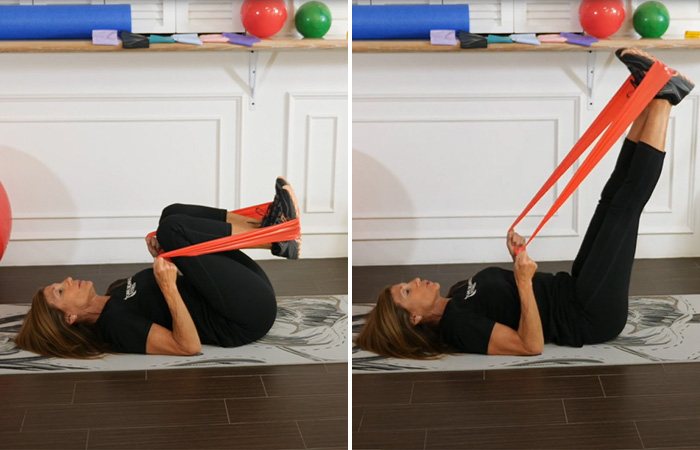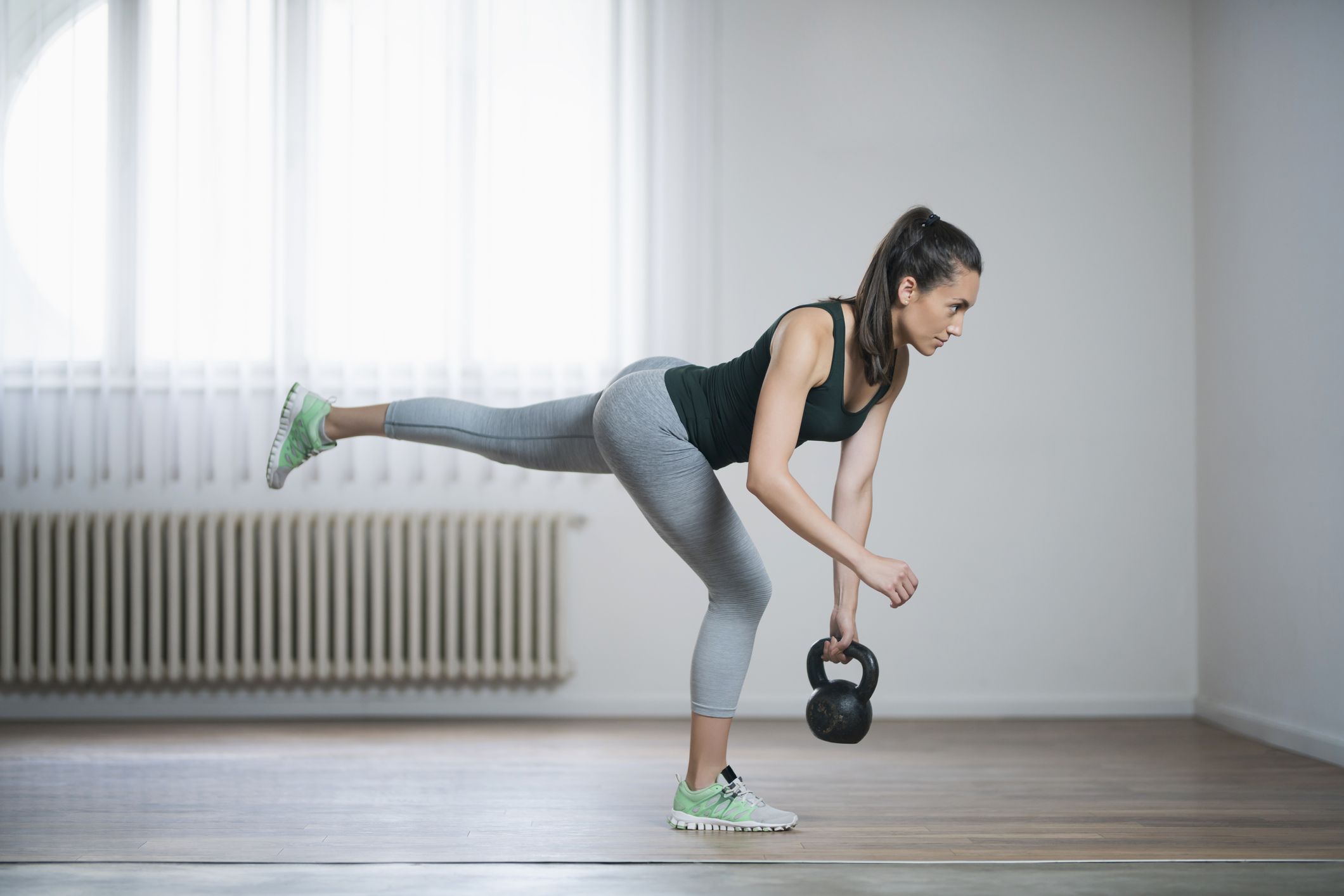
Effective Exercises for Osteoporosis Prevention
Exercises for osteoporosis are an effective strategy to increase bone density and minimize fractures. The International Osteoporosis Foundation considers osteoporosis (loss of bone mineral density) as a silent disease. Unless you get a fracture, you will not know that you have osteoporosis.
According to the National Health and Nutrition Examination Survey conducted between 2017–2018, the prevalence of osteoporosis among US adults aged 50 or above was 12.6%. Furthermore, the percentage of women (19.6%) afflicted by osteoporosis was more than men (4.4%).
UK-based sports nutritionist Zaakir Kayani (PG Diploma in Sports Nutrition with the International Olympic Committee) emphasizes the significance of exercising: “Regular exercise is a great way to build strong bones and slow down bone loss. Starting out from an early age and sustaining exercise throughout life is highly recommended.”
Basic Guidelines Of Osteoporosis Exercises
-
Warm-up before exercising.
-
Use a heated compress or take a shower with hot water before exercising if you have limited mobility.
-
Consult your doctor before doing these exercises.
-
Do these exercises under the supervision of a certified fitness trainer.
-
Focus on form.
-
Do these exercises on the bed or a chair if you are unable to stand up.
-
Do standing exercises near a wall or take the support of substantial furnishings.
-
Place a 10-15 mm yoga mat to reduce the impact in case of a fall.
-
Increase sets and reps progressively.
-
Do weight-bearing exercises only if you are comfortable.
-
Stop any movement if you experience an acute discomfort.
-
Take rest to help your muscles and bones rejuvenate.
-
Also, consider doing resistance band training.
Best Osteoporosis Exercises And Yoga

Carol Michaels, Osteoporosis and Cancer Exercise Specialist, says, “An effective exercise program includes aerobic (weight-bearing), strength training, and posture and balance exercises. It is crucial to focus on exercises designed to treat osteoporosis by strengthening the bones and muscles, leading to improved posture and equilibrium. Strength training actually stimulates the bone because the muscle is pushing on the bone. We lose muscle mass as we age, and with less muscle, there is less strain on the bones. So, not only does strength training increase our muscle mass, which has numerous benefits, but also stimulates the bones. Exercising while standing is more effective and can help with balance as well.”
1. Chair Squats
This is an excellent full-body strengthening and balancing exercise. You can either choose a settee or a chair. A chair with an armrest is preferred so that you can rest your fingertips on it for support.
Steps
-
Stand with your ankles broader than shoulder-width apart in front of a chair. Roll your shoulders back, elongate your spine, and gaze forward.
-
Push your pelvis back, flex your knees, and descend your body.
-
Tap on the chair and stand back up to the starting position.
-
Do this 10 times and increase the reps and sets.
2. Chair Calf Raises
These operate on the calf muscles and help strengthen them.
Steps
-
Stand behind a chair and position your palms on the backrest. Roll your shoulders back and gaze forward. This is the beginning position.
-
Raise your ankles off the ground.
-
Pause for 5-8 seconds, exhale, and position your soles on the ground.
-
Do this 15 times.
3. Hamstring Curl With Balance Improvement

Hamstring raises strengthen the hamstrings, quadriceps, and ankles. Do this exercise by supporting your forearms on the backrest for a few days or weeks. Once you are familiar with the exercise, remove your hands off the backrest to enhance your equilibrium.
Steps
-
Stand behind a chair and position your palms on the backrest.
-
Lift your right leg off the floor, adduct your knee, and curl your calf up.
-
Pause for a moment and position your right foot back on the floor.
-
Do the same with the left limb.
-
Do this 15 times.
4. Leg Swings Balance Exercise
This is another balance-improving exercise that is beneficial for people with osteoporosis and those who want to prevent its risk. You need a chair for this exercise for support.
Steps
-
Place a chair to your right and grasp the backrest with your right hand. Stand with your feet hip-width apart and rotate your shoulders back.
-
Lift your left foot off the floor and take it laterally out. Keep your heels pointing forward.
-
Swing your leg back and bring it across the front of the right leg.
-
Repeat 10 times and do the same with the right limb.
-
Stand behind the chair. Place one or both palms on the backrest.
-
Lift your right leg off the floor and sway it back and forth.
-
Repeat 10 times and do the same with your left limb.
Read Also: Yoga Poses That Work As Exercise
5. Resistance Band Bicep Curl
The bones in your hands also become weakened with age, particularly the wrists. Doing weighted osteoporosis exercises, such as using a resistance band, helps improve muscle strength and flexibility in your hands, thereby improving bone health. You need a flat, open-ended therapy band.
Steps
-
Step on one end of the resistance band with your right foot.
-
Hold the other end with your right hand with the limbs fully extended.
-
Curl up your forearm, keeping your elbow braced against your body.
-
Bring your hand back to the beginning position.
-
Do this 10 times before exchanging hands.
6. Lying Leg Drops

This is a low-impact core-strengthening exercise for individuals with osteoporosis. You need a wrapped cloth to support your lower back.
Steps
-
Place a coiled cloth on a mat.
-
Lie down on the mat cautiously. Adjust the coiled towel so that it is situated exactly where your lower back curves.
-
Lift both your legs off the floor, and maintain your ankles flexed so that your legs are at 90 degrees. This is the beginning position.
-
Bring your right leg down.
-
Tap the floor and elevate your right leg back to the starting position.
-
Do the same with your left limb to complete one rep.
-
Do this 15 times.
How Much To Exercise For Maximum Benefits
It is recommended to commence with 8-10 reps per exercise and progress on to more reps and sets in a week’s time. According to Dr. Tambar, “A high exercise frequency may contribute to injuries. I would recommend commencing at 3 times a week and increasing it to 5 times a week. Give your body plenty of time to recover between exercise days if it is prone to injuries. Start at lesser levels initially when coming back from injury.”
Talk to your doctor and a licensed physical therapist to know what your physical therapy and frequency of exercise, sets, and reps should be. However, you have to be extra vigilant if you are over 60 years and have limited mobility due to arthritis and osteoarthritis. Here are the precautions senior individuals with limited mobility must consider. Keep reading!


